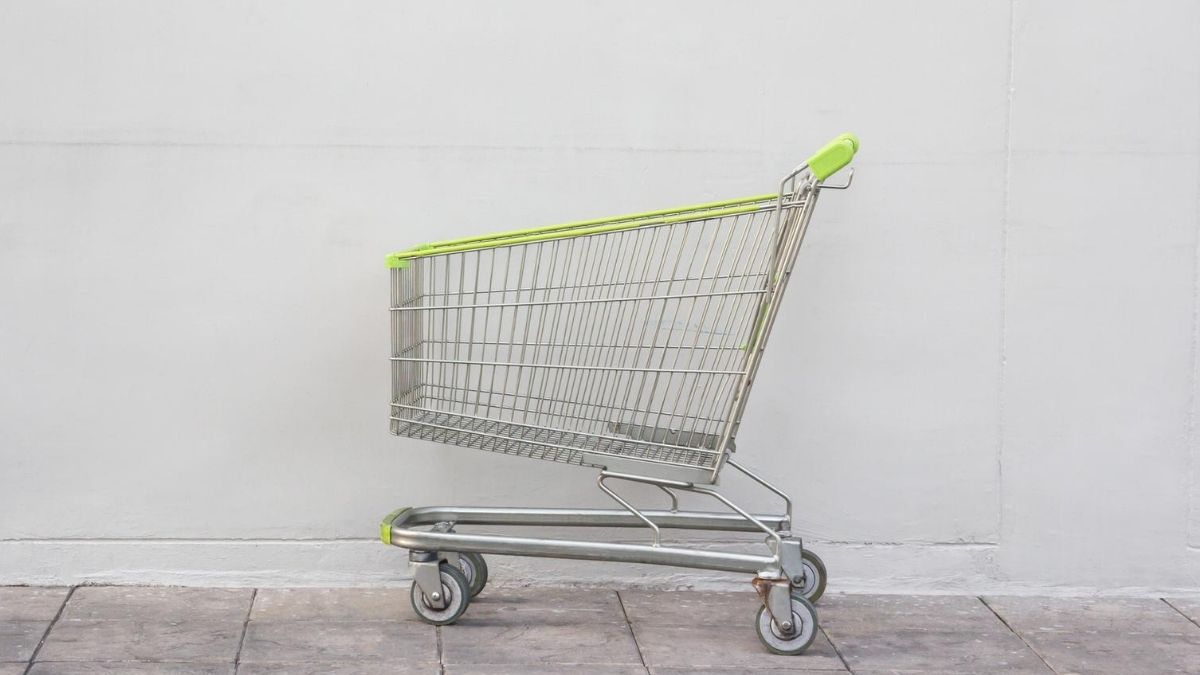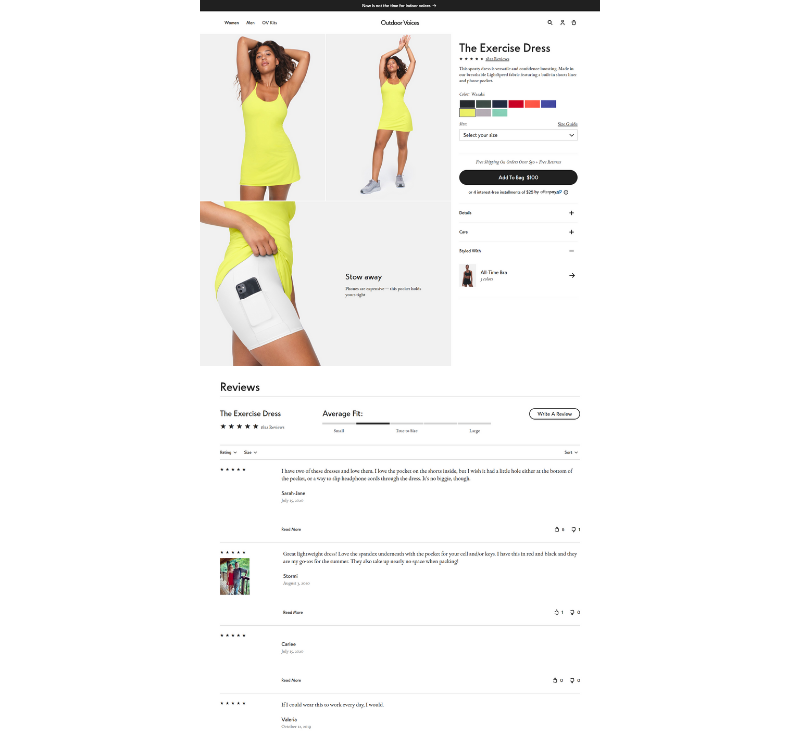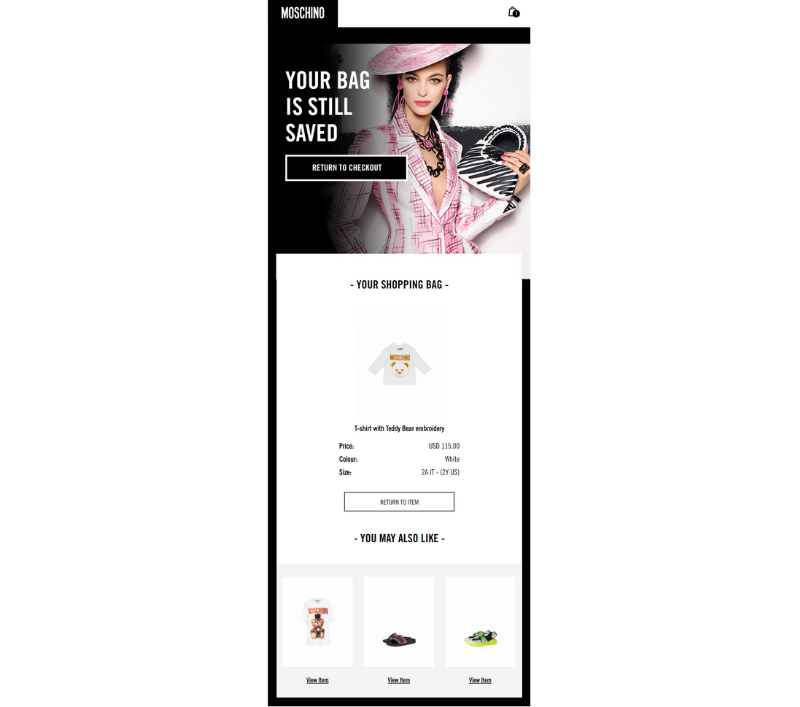5 common reasons for cart abandonment (and how you can overcome them)


What is cart abandonment?
Cart abandonment is when a potential customer adds items to their shopping cart but leaves the website without completing the checkout process. Any item that is added to the shopping cart but it not purchased is considered to be ‘abandoned’.
Abandoned carts differ from checkout abandonment. Checkout abandonment occurs when a customer leaves your website during the checkout process. It also differs from abandoned browse which is when the site visitor leaves without adding anything to their shopping cart. In terms of intent, abandoned cart sits between abandoned browse and abandoned checkout, but is no less important than checkout abandonment.
Ecommerce brands need to keep a close eye on their abandoned cart rate. It’s a key metric that’ll help you identify pain points in your customer journey or signal a poor customer experience. Keeping a close eye on increases and decreases in your cart abandonment rate will help you optimize your customer experience.
5 common reasons for cart abandonment
Every ecommerce brand is different and so will shoppers’ reasons for abandoning their cart. But there are some common reasons for cart abandonment.
1) Additional costs (e.g. shipping, taxes, etc.)
Unexpected costs are a major factor that causes shoppers to abandon their shopping cart. Not displaying any extra costs can make customers feel as though they’re being manipulated by a brand. The brand is not being open and honest about the cost of the product. Therefore, shoppers leave the site to try their luck with another brand.
2) Poor checkout experience
Long, complicated checkout processes or forced account creation are another big reason for abandoned carts.
In ecommerce marketing, we know that if users create an account, they’re more likely to become repeat customers. But it can also significantly slow down the checkout process. This, in turn, can break the path to purchase and drive customers away.
3) Trust issues
This may be a shopper’s first interaction with your brand. If they have no experience or prior knowledge of your brand, they might not feel comfortable entering credit card details online and completing their purchase.
Once you have gained a customers’ trust, they’re 75% more like to continue to buy from you. So, it’s important to build this trust quickly to prevent losing them too soon.
4) Lack of payment options
One of the major trends we’ve been seeing in ecommerce is convenience consumerism. That is, customers want the shopping process to be as easy as possible. At a time when mobile and voice-command shopping is rising, customers don’t want to have to dig out their card to make a purchase.
When brands don’t offer simple payment solutions, they risk customers giving up or putting off their purchase for another time.
5) Shopping around
Shoppers will visit your website an average of 3.5 times before they make a purchase with you. They may add items to their shopping cart because they are close to what they’re looking for. If you don’t offer a wish list function on your website, adding products that interest them to the shopping cart is the next best option.
How to reduce cart abandonment
1) Cost calculator
As ecommerce marketers, we know we’re not trying to trick shoppers into buying our products. Costs may vary depending on the size of the order, weight of the package, and taxes at the final point of delivery. Until a shopper has selected a product and provided an address it’s hard to show an estimated cost of delivery and free delivery may not be an option for you.
To prevent this from adding to your cart abandonment rate, adding a delivery cost calculator to your site is a must. Either allow customers to enter a postcode or zip code to see costs, or calculate an estimate in your shopping cart. Both options give customers a much clearer indication of any additional costs.

2) Guest checkout
For shoppers wanting to make a purchase quickly, forced account creation or complicated checkout can stop them from placing an order. Adding a guest option to your checkout process will significantly improve your customer experience.
A simple checkbox option at the end of the guest checkout will allow shoppers to opt-in to receiving email marketing from your brand. This will help you grow your mailing list while keeping customer experience at its highest.

3) Ratings and reviews
Build trust quickly by adding social proof to product and checkout pages. This can be in the form of product or service reviews or star ratings. Displaying these from an independent review website such as Trustpilot or Feefo will significantly improve customer trust in a brand. Especially if they have no experience with your brand, shoppers are more likely to trust the opinion and feedback of their peers.

4) Payment partners
Easy payment options can be a massive deciding factor for shoppers looking for a spontaneous purchase. On-the-go shoppers won’t always have their card details to hand, so partnering with payment providers such as PayPal, Klarna, and AfterPay is a winning tactic. Modern consumers want the process to be as simple as possible, so finding the right partners is essential for improving customer experience and reducing cart abandonment.

5) Abandoned cart emails
For shoppers browsing around for the right product, an abandoned cart email may be the prompt they need to make a purchase.
An abandoned cart email is an email automation triggered when a shopper abandons their shopping cart. Typically, it’s triggered to land in the shoppers within an hour of abandoning. This is when readers are most engaged and likely to convert.
There are many strategies you can adopt when building cart recovery emails. For browsing shoppers, we tend to find two tactics work particularly well: discounts and product recommendations.
A discount email entices the shopper to return with a limited time offer such as 10% off the order. To ensure you’re capturing high-intent customer, you can set criteria such as cart value. If a cart is worth over $50, they receive a 10% discount, 15% off if its total value is $150 or more.
Adding a product recommendation block can showcase products they might have missed while browsing. AI-powered recommendations such as ‘also bought’ will display items in your catalog that have been bought with the abandoned item. Lookalike recommendations advertise similar products. This is particularly useful for indecisive shoppers looking for a particular style or item.

The performance of your cart recovery automation programs should be closely monitored. Reporting on your automation programs will reveal which tactics are successfully converting your shoppers. Optimizing is essential to maximize the revenue-generating potential of abandoned cart emails.

